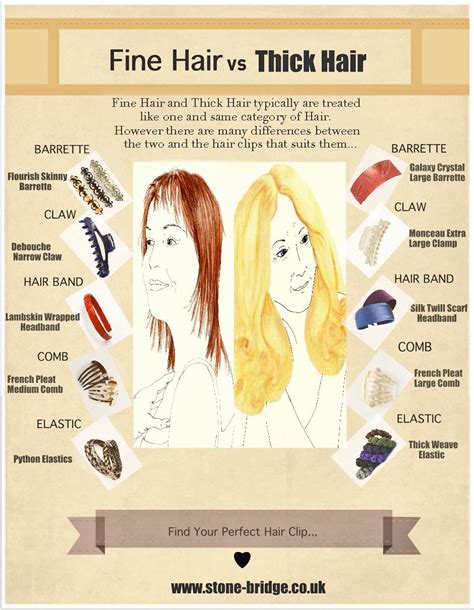The Hair Chronicles: Unraveling the Secrets of Scalp Texture
Introduction

The world of hair care is a vast and nuanced realm, and understanding your scalp’s unique characteristics is paramount to achieving healthy, luscious locks. Scalp texture, ranging from fine to thick, plays a significant role in determining the best hair care regimen for your individual needs. In this comprehensive guide, we’ll delve into the complexities of fine and thick scalps, exploring their distinct attributes and recommending tailored solutions to address their specific concerns.
Chapter 1: Fine Scalp: The Delicate Diva
Fine scalps are characterized by hair that is thin and delicate. Often associated with blondes and redheads, fine hair has a smaller diameter, resulting in a lower overall hair density. With an average of 150,000 to 200,000 hair follicles per square inch, fine hair is prone to breakage and can appear flat or limp without proper care.
Understanding Fine Scalp Challenges
- Proneness to Greasiness: Fine hair tends to get oily faster due to increased sebum production, which can weigh down the strands and compromise volume.
- Lack of Volume: The finer the hair, the harder it is to achieve body and fullness.
- Frizz and Flyaways: Fine hair can be easily affected by humidity, resulting in frizz and unruly flyaways.
- Split Ends: The delicate nature of fine hair makes it susceptible to split ends and breakage.
Tailored Solutions for Fine Scalps
- Embrace Volumizing Products: Look for shampoos, conditioners, and styling products specifically designed for fine hair, as they contain ingredients that help boost volume and lift roots.
- Avoid Overwashing: Reduce the frequency of washing to prevent excessive sebum production and preserve natural oils.
- Try Dry Shampoo: Dry shampoo can absorb excess oil and freshen up hair in between washes without weighing it down.
- Consider Layers: Layered haircuts can create the illusion of fullness and volume in fine hair.
Chapter 2: Thick Scalp: The Luxurious Crown
Thick scalps boast an abundance of hair follicles, with an average of 250,000 to 350,000 follicles per square inch. As a result, thick hair is typically coarse, strong, and resilient. However, this luxuriance can also come with its own set of challenges.
Understanding Thick Scalp Concerns
- Dryness and Roughness: Thick hair often struggles with dryness due to its lower porosity, which makes it difficult for natural oils to penetrate the hair shaft.
- Tangling and Knots: The coarse texture of thick hair can lead to stubborn tangles and knots.
- Heat Damage: Thick hair is more prone to heat damage from styling tools due to its thicker cuticle.
- Styling Challenges: Coarse, thick hair can be more difficult to style and requires extra effort to achieve desired looks.
Tailored Solutions for Thick Scalps
- Deep Conditioning: Regularly indulge in deep conditioning treatments to hydrate and soften thick hair.
- ** detangling Products:** Invest in detangling sprays, conditioners, and combs to prevent tangles and knots.
- Embrace Moisturizing Shampoos: Use shampoos that are formulated specifically for thick hair and contain moisturizing ingredients.
- Minimize Heat Styling: Reduce the frequency of using heat styling tools to avoid damage to thick hair.
Chapter 3: The Fine-Thick Spectrum: Understanding the Variations
Not all scalps fit neatly into the categories of fine or thick. Many individuals have a scalp texture that falls somewhere in between these extremes, presenting a unique set of concerns.
Understanding the Spectrum
- Medium Scalp: Hair that has a diameter in between fine and thick, combining some characteristics of both.
- Mixed Scalp: A scalp with a combination of fine and thick hair strands.
- Seasonal Variations: Scalp texture can fluctuate with the seasons, becoming finer in winter and thicker in summer due to hormonal changes.
Tailored Solutions for Variations
- Consult a Hair Professional: Visit a hairstylist or trichologist to assess your scalp texture and receive personalized recommendations.
- Experiment with Products: Try different hair care products designed for fine, thick, or medium hair textures to find what works best for you.
- Adapt Your Routine: Adjust your hair care routine based on the season and your scalp’s changing needs.
Table 1: Scalp Texture Characteristics
| Scalp Texture | Diameter | Density | Hair Texture |
|---|---|---|---|
| Fine | Smaller | 150,000-200,000/sq in | Thin, delicate |
| Medium | Intermediate | 200,000-250,000/sq in | Somewhat thick |
| Thick | Larger | 250,000-350,000/sq in | Coarse, strong |
Table 2: Common Scalp Texture Concerns
| Scalp Texture | Common Concerns |
|---|---|
| Fine | Greasiness, lack of volume, frizz, split ends |
| Thick | Dryness, tangles, heat damage, styling challenges |
| Mixed | Combinations of concerns from both fine and thick scalps |
Table 3: Tailored Hair Care Solutions
| Scalp Texture | Key Hair Care Products |
|---|---|
| Fine | Volumizing products, dry shampoo, layers |
| Thick | Deep conditioners, detangling products, moisturizing shampoos |
| Mixed | Consult a hair professional, experiment with products, adapt routine |
Table 4: Additional Tips for Scalp Care
| Tip | Benefits |
|---|---|
| Massage your scalp regularly | Improves blood circulation and promotes hair growth |
| Protect your hair from the sun | UV rays can damage hair and lead to dryness |
| Avoid harsh chemicals | Stripping hair of natural oils can result in damage |
| Eat a healthy diet | Nourishing your body from within promotes healthy hair |
Conclusion
Understanding your scalp texture is the key to unlocking a healthy and vibrant head of hair. Whether you have a fine, thick, or somewhere in between, tailored hair care solutions exist to address your specific concerns. By embracing the unique attributes of your scalp, you can achieve your hair goals and indulge in a luxurious mane that reflects your radiance.
